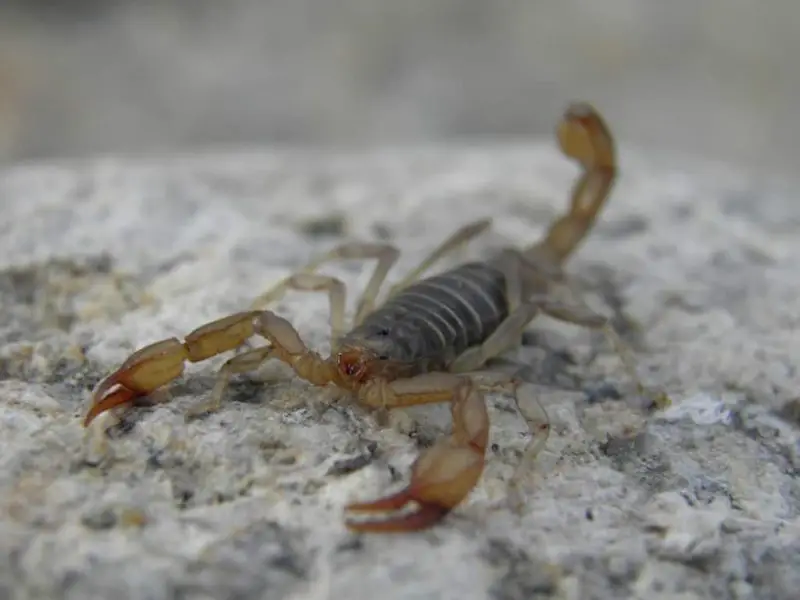When you go into Utah’s backcountry, particularly but not limited to the state’s southern and western deserts, there’s a chance that you’ll be sharing your surroundings with scorpions.
According to Utah State University’s fact sheet, there are at least 9 different scorpion species in the state. What’s more, there is anecdotal evidence of several others.
An interesting thing about scorpions is that they glow blue-green under ultraviolet light when it’s dark outside. They even glow dimly in the moonlight. However, they really glow under black light.
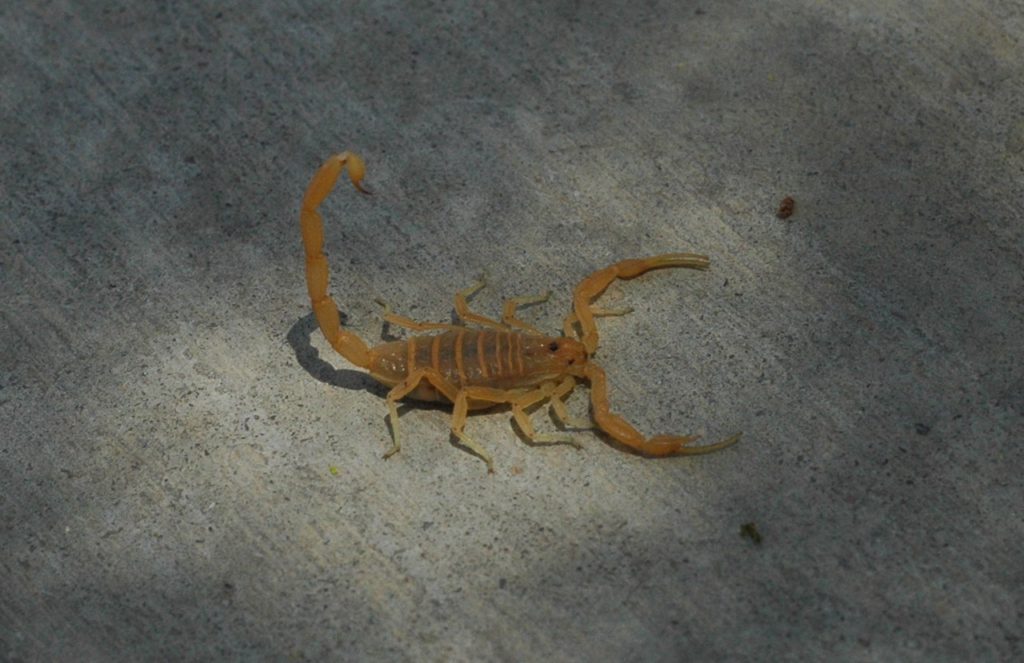
Arizona Bark Scorpion
The Arizona Bark Scorpion, whose scientific name is Centruroides sculptures, is quite small, with a maximum length of 2 1/2 inches. They are tan in color, with their back being slightly darker than the rest of their bodies. Another identifying characteristic is that bark scorpions, in general, are the only type of scorpion that hold their tails curled to the side when they’re at rest. Additionally, they are the only species of scorpion in Utah with the ability to climb rough surfaces. Consequently, they climb trees, walls, and other vertical objects as long as the surface has some texture to it. These scorpions tend to hide in the cracks of rocks, beneath tree bark, and in leaf litter.
Arizona bark scorpions closely resemble and are closely related to the Baja California Bark Scorpion Centruroides exilicauda. However, the sting of an Arizona Bark Scorpion is much more dangerous.
They are the most venomous species of scorpion in North America. The list of effects caused by an Arizona bark scorpion sting may last up to 72 hours. They include will include all or some of the following
- significant pain
- numbness
- tingling, shortness of breath
- temporary loss of function and or convulsions in the affected limb
- vomiting
- In rare extreme cases, death
Since records have been kept, 2 people in the state of Arizona have died from the effects of Arizona bark scorpion stings. Arizona bark scorpion stings are particularly dangerous to young children and the elderly.
From Medical News Today, if an individual experiences any of the following symptoms after a scorpion sting, they should seek immediate medical attention.
- muscle jerking or spasms
- difficulty swallowing
- drooling
- leg weakness
- unconsciousness
- difficulty breathing
- swelling or hives over the body
There is an FDA-approved antivenom for bark scorpion stings called Anascorp. Most of the hospitals that have Anascorp on hand are in Arizona. However, there are a few hospitals in southern Utah and Nevada that have it on hand as well.
Arizona Bark Scorpions, as the name suggests, primarily live in Arizona and the Sonoran Desert of Mexico. They also live in California, Nevada, New Mexico, and southern Utah.
In the state of Utah, Arizona Bark Scorpions have limited distribution. They primarily live in Kane County. However, they are increasingly being found in the St. George area. It is thought that they are being brought in with the palm trees that are used for landscaping. Source
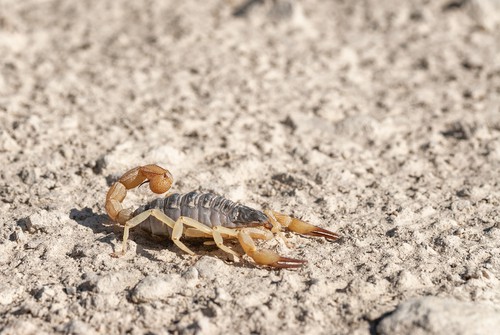
Black Hairy Scorpion
The Black Hairy or Black-Back Scorpion, Hadrurus spadix, is closely related to the Giant Hairy Desert Scorpion. Consequently, they are also quite large. They grow up to 5 1/2 inches long from their head to the tip of their tail.
Their undersides, legs, claws, and tail are all yellow. The tops of their backs are black. Additionally, the tips of their claws are brown. Another identifying characteristic that these scorpions have is that their bodies are covered with fine hairs.
Hairy Black scorpions take shelter in burrows that they excavate in the desert sand.
In Utah, these scorpions primarily live in the southeastern part of the state.
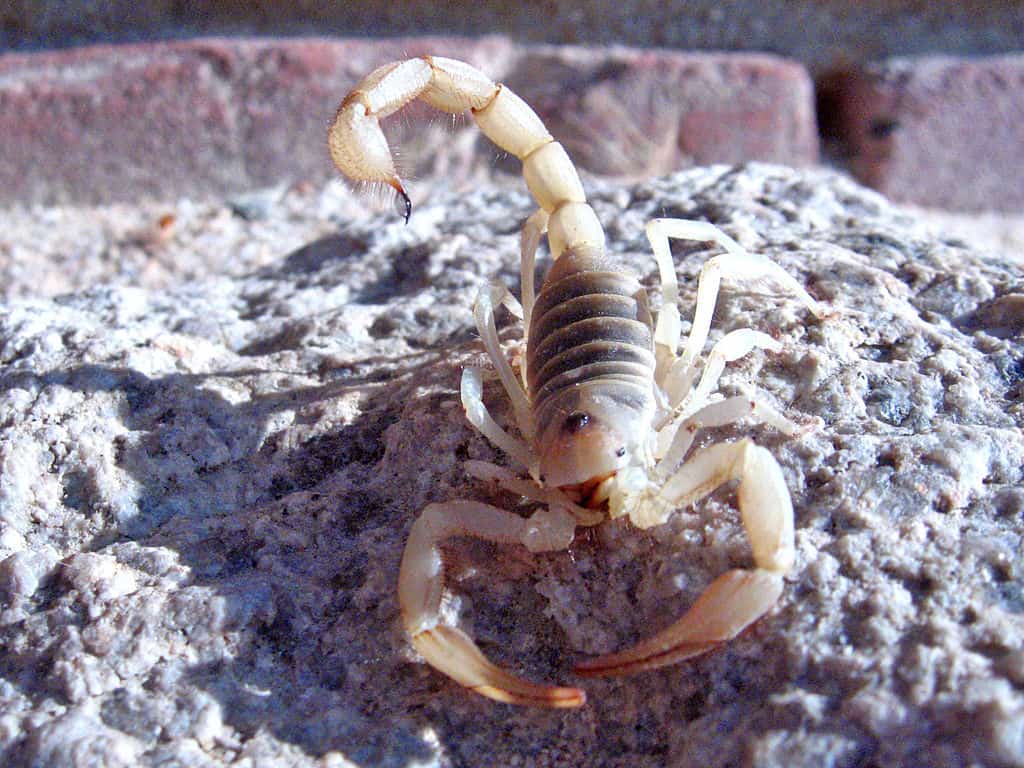
Giant Desert Hairy Scorpion
The Giant Hairy Scorpion, or the Arizona Hairy Scorpion, has the scientific name Hadrurus arizonensis. It is the largest scorpion species in North America. Their name is partially derived from the fact that their tails are covered with small erect hairs
They grow from 4 to 7 inches in length. Additionally, they are tan to olive green in color with darker colored tops. What’s more, they have yellow legs, pedipalps, and tails.
They generally inhabit abandoned animal burrows, small caves hollowed out by weather action, or other natural crevasses. They are nocturnal and are more active in the summer months than in winter. In the coldest part of the winter, they may become completely dormant, spending all of their time in their underground burrows.
The majority of their home range lies within the Sonoran and Mojave deserts of California, Arizona, and Mexico. However, they are also residents of parts of Nevada and Utah.
Giant Desert Hairy Scorpions feed primarily on insects and other arthropods, including other scorpions. Despite their fearsome appearance and larger size, their venom is relatively weak compared to other scorpion species. While it effectively immobilizes smaller prey, it is primarily ineffective against vertebrate species.
In Utah, these scorpions live in the extreme southwestern corner of the state, primarily in Washington county.
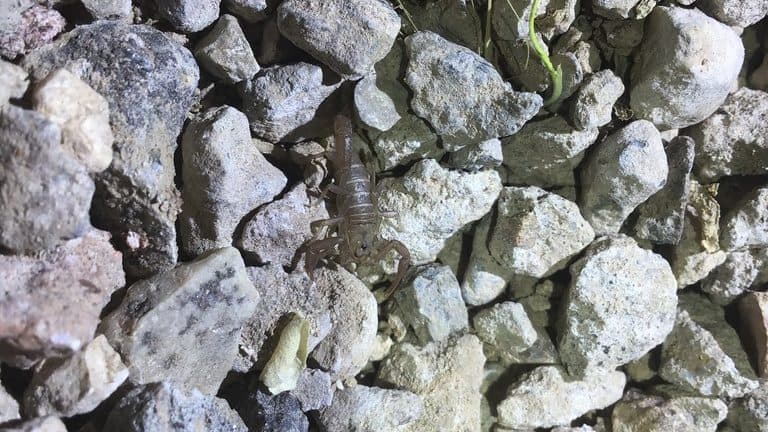
Sawfinger Scorpion
There are over at least 25 different sawfinger scorpion species that come from the Serradigitus genus. However, the one we’re talking about is Serradigitus wupatkiensis. This is the scientific name for a variety of sawfinger scorpions resident to southeastern Utah. They are 1 to 2 inches long and have light yellow appendages with a greenish-grey back with vertical yellow stripes.
Although their sting will cause some discomfort, as would a bee sting, it is low in toxicity and not a cause for serious concern in most cases.
These creatures live in Southeastern Utah.
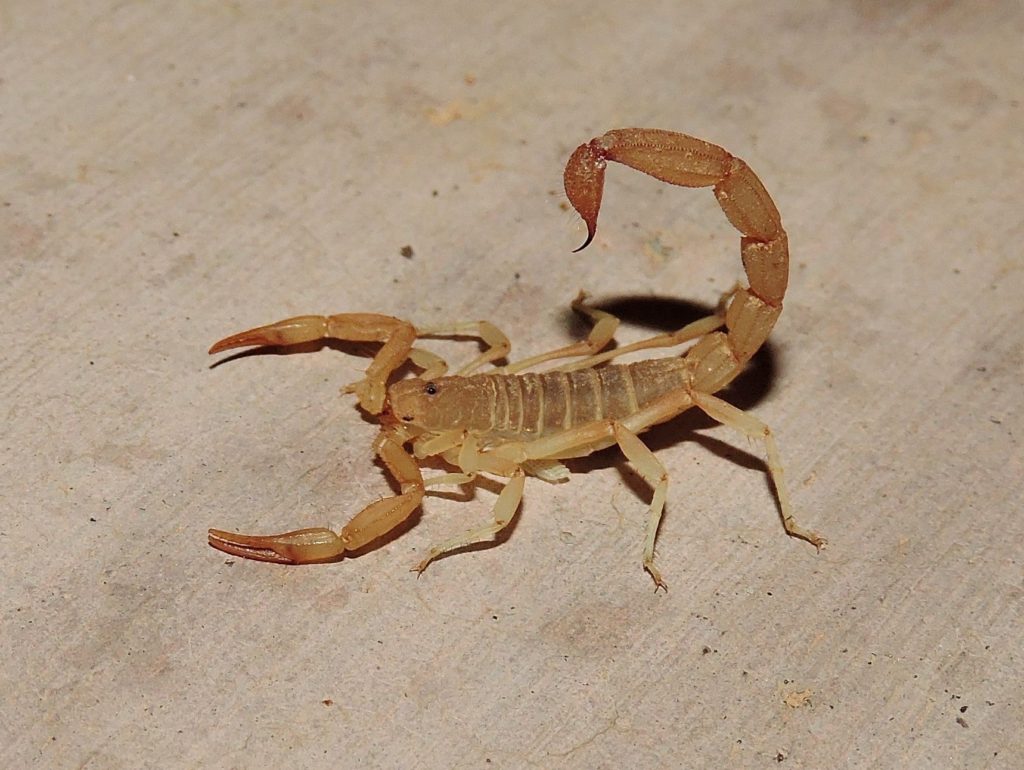
Yellow Ground Scorpion
The Yellow Ground Scorpion is the common name for the Vaejovis confusus. Other common names for this species are yellow devil scorpion and stripe-tailed scorpion. This is a nocturnal scorpion that lives from southern Arizona up through western Utah and into southern Idaho. They are yellowish in coloration with brown backs and lateral brown stripes that run the entire length of their tails.
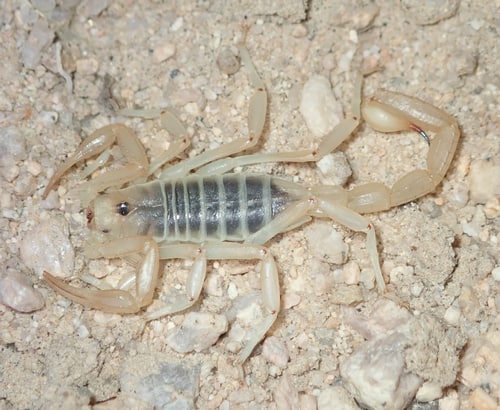
Beck’s Desert Scorpion
The Beck’s Desert Scorpion, scientific name, Paruroctonus becki, lives in the Mojave Desert of California, southwestern Utah, and southern Nevada. Additionally, they live in the Great Basin of Nevada and western Utah.
Beck’s desert scorpions are light tan with grey backs. Adults of this species are up to 4 inches long.
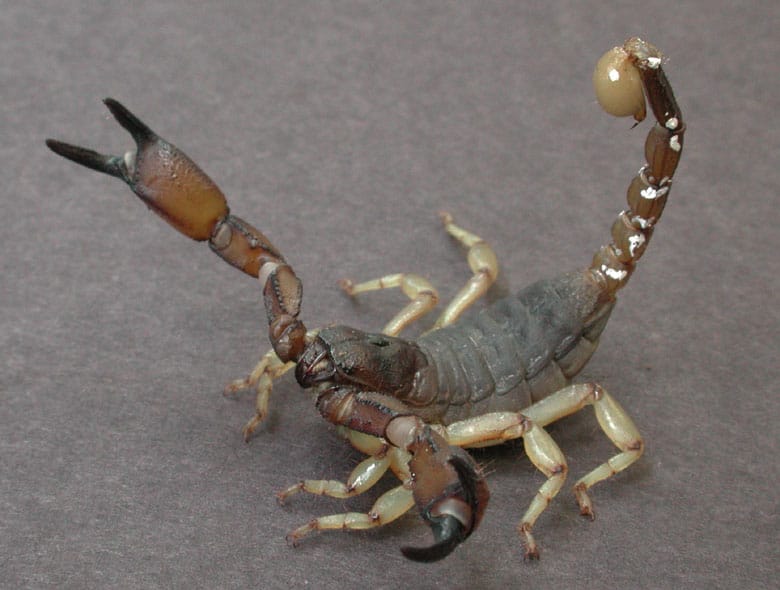
Black Clawed Scorpion
The Black Clawed Scorpion, whose scientific name is Anuroctonus phaiodactylus. It also goes by the common names swollen stinger scorpion and Mafia scorpion. These scorpions live in California, Nevada, southern Idaho, and Utah. In Utah, they live the Great basin and are found as far east as the Salt Lake valley.
Kochius Hirsuticauda
This is a small burrowing scorpion. Its body and legs are yellow in color, while its back arms and pinchers are brown. These scorpions grow to a maxim of 1 1/4 inches in length. There has not been much research done on them. Consequentially, they don’t even have a common name.
They are not very numerous, but they live in California, Nevada, Arizona, and Utah.
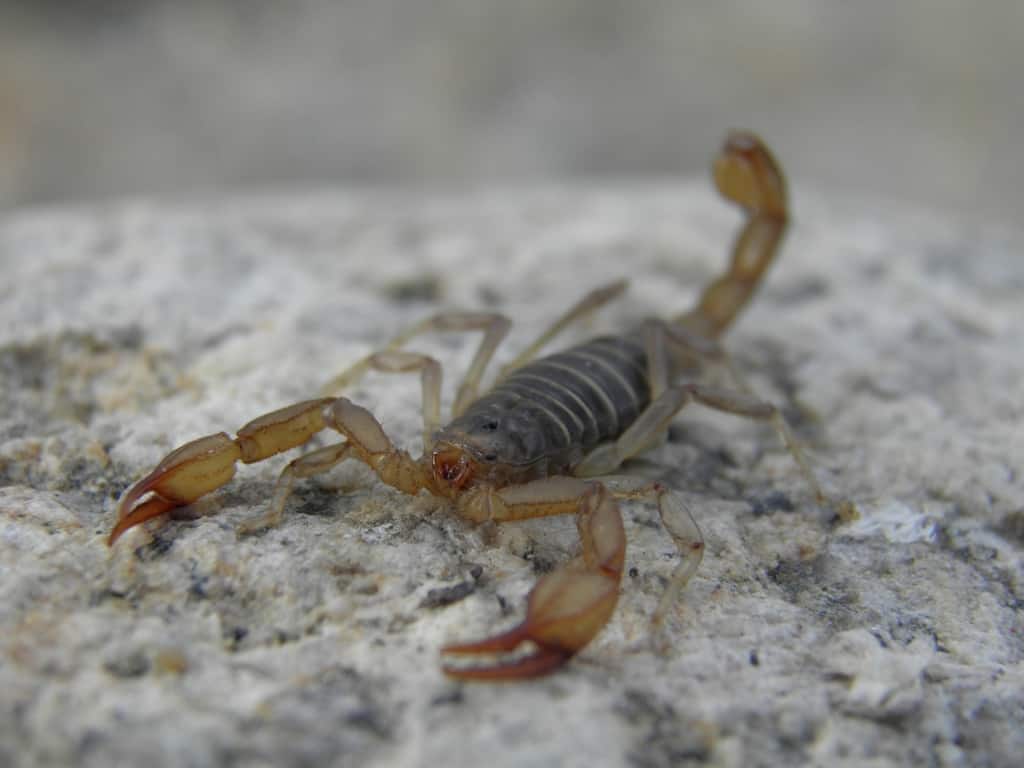
Northern Scorpion
The Northern scorpion, whose scientific name is Paruroctonus Boreus, is more tolerant to the cold than are other types of scorpions. Consequently, they live statewide, from the hot deserts in the southern part of the state to the cold semiarid deserts of northeastern, northern Utah.
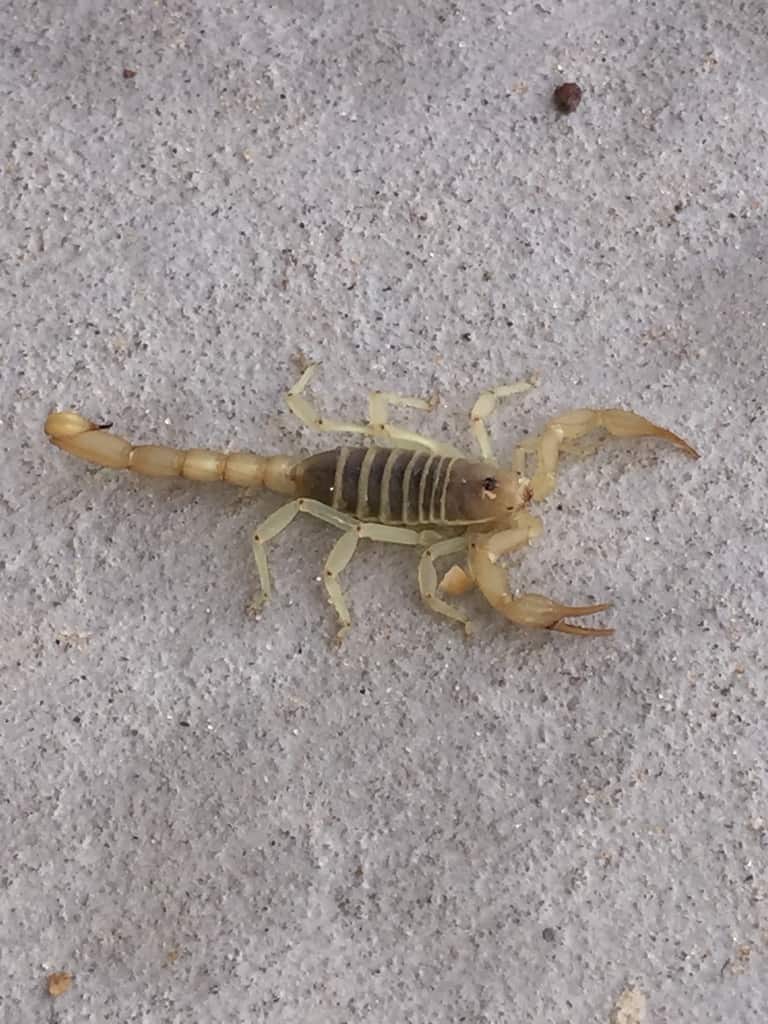
Eastern Sand Scorpion
The Eastern sand scorpion, Paruroctonus utahensis, is pale yellow to yellowish-brown in color. Their color matches the surrounding desert sand. Their pinchers are fat and swollen in appearance with proportionately short fingers. Another identifying characteristic is that they have bristlecones on their legs.
These are burrow digging scorpions.
This species lives in Utah, Arizona, Texas, New Mexico, and Chihuahua in Mexico.
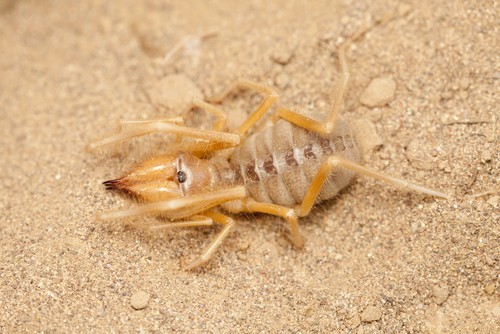
Sun Spiders
Another interesting arachnid that you might run across in the deserts of Utah is a sun spider. Sun spiders are also called camel spiders or wind scorpions. These creatures have strong jaws that are capable of delivering a nasty bite. However, they are not venomous. They look like a cross between a spider and a scorpion, but they are actually neither. They are an arachnid, but they are from the order sollifugae. There are more than 1000 sollifugae species that live in Aisa, Africa, the Americas, and southern Europe.
Scorpion Safety
One thing that all scorpions have in common is the ability to deliver a venomous sting. However, in most cases, a scorpion sting is no more dangerous than a bee or wasp sting.
In fact, even though there are over 1100 species of scorpions, out of those 1100, only around 25 species are dangerous to humans. In North America, only one is.
On the other hand, southern Utah is home to the Arizona bark scorpion, which is one of the most dangerous 25 scorpions in the world and the most venomous scorpion in North America. What’s more, even though outside of an allergic reaction, most scorpion stings aren’t extremely dangerous, they are still painful.
An ounce of prevention will not only go a long way, but it is also advisable in Utah’s scorpion country.
You can start by paying close attention to where you place your hands and or bare feet while in camp. You should also closely examine and shake out your bedding, boots, spare clothing, and any other items that would make likely hiding places for the critters.
Something else to remember is that unless they’re freshly molted or too young to have a hardened exoskeleton, all scorpions glow in the dark under black light. Black light flashlights are available online. You can also find them in some sporting goods and or hardware stores in the desert southwest.
Recent Posts
The only venomous snakes in Washington State are Northern Pacific Rattlesnakes. The Northern Pacific Rattlesnake (Crotalus oreganus oreganus) is a sub-species of the Western Rattlesnake. Anyone...
Skunks are not classified as true hibernators. But they go into a state of torpor when the weather gets cold. Skunks are light sleep hibernators, along with opossums, bears, and raccoons. ...

